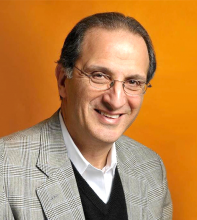You are here
Healing our divided America
Mar 01,2021 - Last updated at Mar 01,2021
In 1967, the Kerner Commission, created by president Lyndon Johnson to investigate the riots that had engulfed America’s cities, concluded that “Our nation is moving towards two societies, one black, one white — separate and unequal.”
As this past year’s mass demonstrations against police violence and racial inequities, in addition to the mobilisation of the Trump-led white grievance movement made clear, we may be worse off today. There are signs that the America polity has become like two warring tribes who speak different languages and see reality through different eyes. The question is, “How did we get to this point?”
I have written before about the blight of systemic racism and the damage it continues to inflict on Black lives in America. Less examined has been the other side of our nation’s divide. None of this can excuse the white nationalist, armed elements who led the violent insurrection, rather it is to understand the mass base of discontent from which they drew their support.
As I watched the emergence of Tea Party in 2009, the Trump rallies from 2015 on, and the insurrection at the Capitol Building in 2021, it was evident that many who participated were white working and middle-class Americans angry at being left behind and who felt betrayed and abandoned by government. They had also come to believe that only Donald Trump understood their grievances and was going to fight for them. It was true that Trump used racism and fear of immigrants as bait, but the message the resonated was his promise to bring jobs, and hope. How was it that this narcissistic, hedonistic, billionaire, reality TV star appeared as their saviour?
There are two factors that I believe account for this: the decline in belief in the American dream and the loss of confidence in government institutions and leaders.
Back in 1995, I was at an afternoon coffee conversation with then President Bill Clinton. He had invited a small group to discuss problems facing the country. I used the opportunity to speak with him about what had happened in my hometown. My neighbourhood had been made up of mostly immigrant families and their descendants, living in two family homes. The men worked in unionised factory jobs. Their one salary allowed them to provide for their children and their elderly parents. They were secure. Then the mills closed and moved down south where labour was non-unionised and cheaper.
Thousands lost work. Many were forced to move. Extended families were severed and even many nuclear families fractured under the pressure of unemployment. Within a few decades, my hometown lost nearly one-half of its population. Neighbourhoods fell into ruin and social problems grew.
I asked the president, who had just celebrated the implementation of NAFTA, which many labour leaders opposed because they feared it would result in greater job loss, what he would do about hometowns like mine? His response startled me. He said something like, “We’re never going back there again. Those jobs are gone. That’s why we need to invest in retraining, portable health care, and opportunities for people to relocate to where there is work.”
While I was impressed with how immediately he responded, I was shocked at how flippant and unfeeling it was. He wasn’t speaking about my neighbours — what they had invested in their homes, the hopes they had for their children, and their dreams that had come to naught.
Much the same happened during the economic collapse of 2008-2009. In just a few months, unemployment doubled, pensions lost 30-40 per cent of their value, and one in five homeowners were in danger of losing their homes. The White House and Congress responded by bailing out the banks and Wall Street, but average Americans were left waiting for money to eventually trickle down to them. Some saw benefits, but not enough to restore the confidence of most Americans that government cared about them. In just six months, polling showed a dramatic decline in belief in the American Dream.
In addition to this sense of economic dislocation and abandonment, there was a loss of confidence in government institutions. During the Bush presidency, Americans came to feel that government couldn’t keep them safe (9/11), could not be counted on to tell them the truth (the Iraq War), or even respond to national emergencies, the disastrous response to hurricane Katrina.
And then there were the governance dysfunctions created by the growing polarisation of our politics. Democrats and Republicans each courted their supporters, and every issue came to be seen through the lens of this hyper-partisan struggle. For the white working-class, Democrats came to be seen as caring more for “minorities” and women’s issues, leaving the field open for Republicans to prey on the feeling of abandonment of white voters. Despite the Republican agenda consistently favoring the wealthy (with lower taxes), corporations (with deregulation), and religious conservatives (with anti-abortion and anti-LGBT legislation), they nevertheless made significant inroads with working class voters.
Then came Donald Trump, who while never veering from this Republican agenda, cast himself as the champion of the white working class. Although everything about his history was antithetical to their needs, he spoke to their grievances. He promised that he would: bring back their jobs and defend them against the elites who had turned their backs on them. He would make them great again.
Despite having done none of the above, once casting their lot with him, they feared admitting they were wrong. His enemies became theirs. Those who were “stealing this election” were stealing their chance to succeed. This was why 75 million voted for him. And this was why they were so intensely concerned with his loss.
Having witnessed the Republican’s shameful behaviour in the wake of the insurrection, I have no hope they will change direction. Some leaders in that party are still blaming “leftists” for creating the violence. And one senator, who initially condemned Trump, made a pilgrimage to Florida and returned celebrating that “We are the party of the working class, the party of Trump” and cautioning that Republicans can’t win without him.
It is, therefore, up to Democrats to broaden their outreach and to craft a message and policies that speaks to all voters, black, brown, and white and is sensitive to their economic, political, and social concerns. This is something Joe Biden is equipped to do. It will not be easy, but it is necessary that we address both the reality of racial inequities and loss of hope of white working-class voters. Unless we do both and bridge the deep polarisation of American society, our divisions will continue to take their toll.
The writer is president of the Washington-based Arab American Institute













